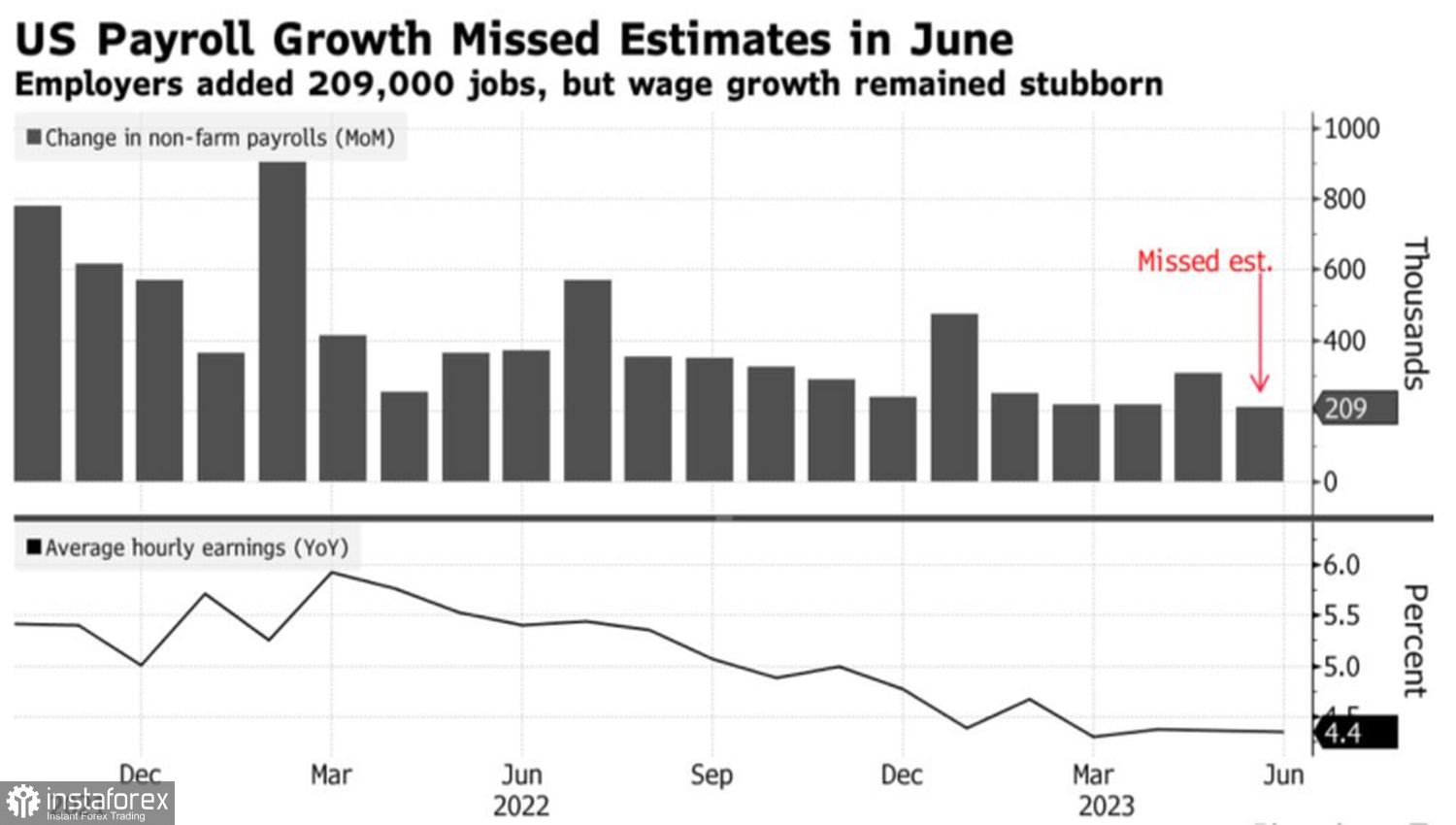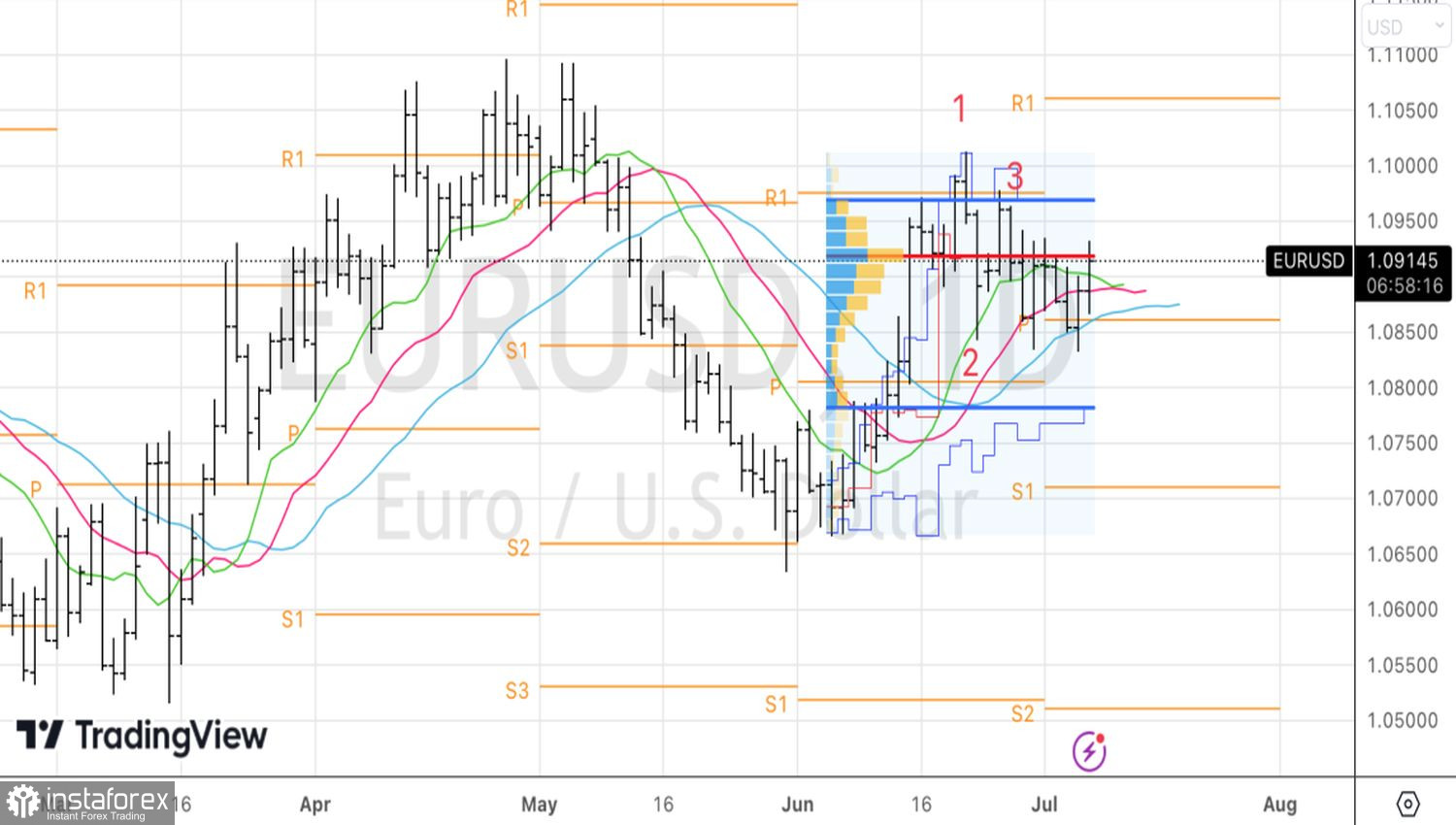First impressions can be deceiving. US total nonfarm payroll employment increased by 209,000 in June, short of the Bloomberg expert consensus forecast and was the weakest in three years. Moreover, the data for April and May were revised down by 110,000. Initially, the market perceived the report as weak, and as a result, Treasury bond yields fell and the EUR/USD rose above 1.092. However, the devil is always in the details.
In the lead-up to the report, investors were counting on strong numbers as private sector employment from ADP rose by nearly half a million people. However, the actual non-farm payrolls turned out to be worse than that report by the largest amount since the beginning of 2022. This can be seen as a sign of a cooling labor market. Nevertheless, the unemployment rate slipped to 3.6% from 3.7% in May. As long as it does not increase, we can forget about a recession in the US economy. In addition, the average wage increased faster than expected, so it's still too early for the Federal Reserve to relax.
U.S. private sector employment

The employment report for the US private sector turned out to be mixed. It reduced the probability of a rate hike to 5.75% in 2023 from 41% to 36%, which worsened the USD's position against main competitors. However, Deutsche Bank noted that only a figure of +100,000 or less for non-farm payrolls could change the worldview of FOMC officials and make them abandon their plans for two acts of monetary tightening this year.
June employment data gave food for thought to both the "hawks" and "centrists" of the Fed, as well as the bulls and bears for EUR/USD. Now, investors are focused on US inflation data and Fed Chair Jerome Powell's speech in Jackson Hole. Bloomberg experts expect consumer prices to slow in June from 4% to 3.1%, and core inflation from 5.3% to 5% year-on-year. CPI is moving so quickly towards the 2% target that it's as if Fed officials have not changed their minds. Could it be that this time the financial market will be right? And those who went against the Fed will make money? We'll see.

Not everyone agrees with this. ING notes that the minutes of the FOMC's June meeting set a very high bar for incoming data for the central bank to abandon its plans. The US labor market report is unlikely to have surpassed this bar. Core inflation continues to remain high, and the economy is firmly on its feet. All this allows ING to predict the EUR/USD pair's fall towards 1.08 within the next week.
Technically, on the daily chart, there is a battle for the fair value at 1.092. Closing above this level will allow traders to buy on a breakout of resistance at 1.0935. This is where the upper band of the consolidation range within the "Spike and Ledge" pattern is located. On the contrary, if the 1.092 mark persists for the bears, we will sell the euro from $1.089.
 English
English 
 Русский
Русский Bahasa Indonesia
Bahasa Indonesia Bahasa Malay
Bahasa Malay ไทย
ไทย Español
Español Deutsch
Deutsch Български
Български Français
Français Tiếng Việt
Tiếng Việt 中文
中文 বাংলা
বাংলা हिन्दी
हिन्दी Čeština
Čeština Українська
Українська Română
Română

